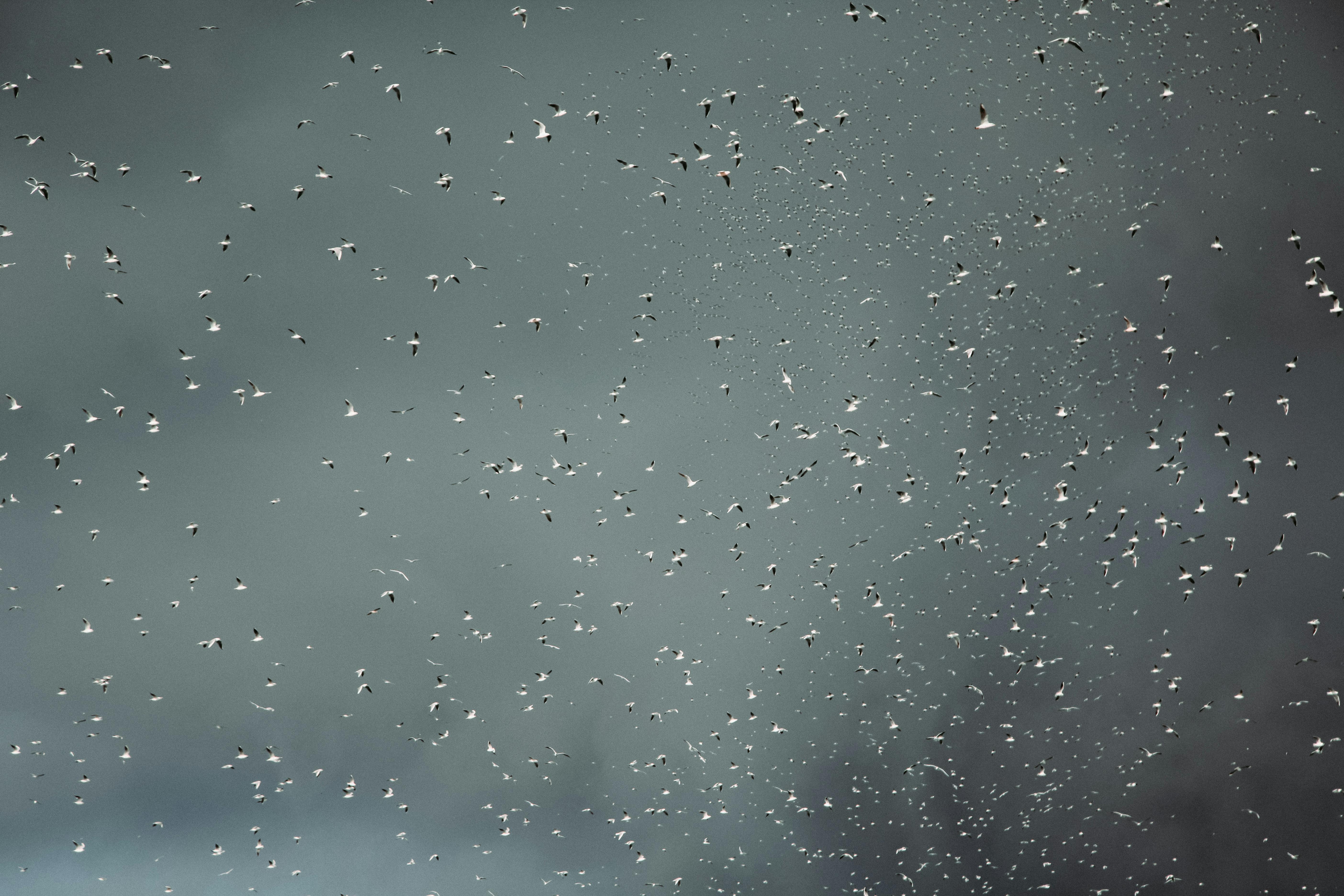Air conditioning systems are designed to keep your home cool and comfortable during the hotter months of summer. But if your air conditioner isn’t dripping water, it may be a sign that something is wrong with the system. Understanding why your air conditioner isn’t dripping water can help you determine if you need to call a professional for repairs or if there’s an easy fix that you can do yourself.There are several possible reasons why your air conditioner is not dripping water. One reason could be that the drainage line is blocked or clogged. This could be caused by dirt, dust, debris, or other foreign objects, which can cause the water to back up and not drain properly. Another reason could be that the condensate pump is not working properly. The condensate pump may be malfunctioning or blocked, preventing it from draining the water away from your air conditioner. Finally, if you have an older air conditioning unit, it could be due to a lack of maintenance. This can cause the drainage system to become clogged over time and eventually stop draining water altogether.
Common Issues that Cause Air Conditioners to Stop Dripping Water
Air conditioners are designed to keep your home cool and comfortable, but they also produce condensation that needs to be drained away. When your air conditioner stops dripping water, it could be a sign of a problem with the system. Common issues that can cause your air conditioner to stop dripping water include a blocked drain line, low refrigerant levels, or a dirty air filter.
A blocked drain line is one of the most common causes of an air conditioner not dripping water. The drain line is responsible for carrying away condensed moisture from the evaporator coil. If it becomes clogged with dirt or debris, it can prevent water from draining properly and cause the system to stop producing moisture. To fix this issue, you’ll need to clean out the drain line or contact a professional for assistance.
Low refrigerant levels can also cause your air conditioner to stop producing water. Refrigerant is what helps keep your home cool by transferring heat away from your living space and into the outside environment. If there is not enough refrigerant in the system, it won’t be able to absorb heat effectively and will cause condensation to build up on the evaporator coil. To fix this issue, you’ll need to contact an HVAC technician who can recharge your system with refrigerant.
Finally, a dirty air filter can also cause an air conditioner not dripping water properly. The filter helps remove contaminants from the air and keep them out of the indoor environment. When it gets clogged with dust and debris, however, it will reduce airflow through the system and cause condensation buildup on the evaporator coil that prevents moisture from draining away properly. To fix this issue, you’ll need to replace or clean your air filter as needed.
These are some of the most common issues that can cause an air conditioner not dripping water properly. If you’re having trouble with your system producing condensation, contact a professional HVAC technician for help diagnosing and fixing the issue quickly and efficiently.
Signs that Indicate Your Air Conditioner Is Not Dripping Water
Air conditioners are designed to cool the air within your home while also helping to reduce the humidity. As part of the air conditioning process, condensation is created as a by-product. This condensation is then released in the form of water droplets through a drip pan and drain line. If your air conditioner isn’t producing any water droplets, it could be a sign that there is an issue with the system. Here are some signs that indicate your air conditioner is not dripping water:
The first sign you should look for is if you notice any moisture or water leaks around your AC unit. If there are any signs of wetness or discoloration around your unit, it could mean there’s a problem with the drain line or condensate pump. Additionally, if you see any standing water near the unit, it could be an indication that something isn’t draining properly.
The second sign to look for is an increase in humidity levels within your home. If you notice an increase in humidity levels even though you’re running your AC, it could mean that the condensation isn’t being released properly and is instead staying within your home. This can cause further issues such as mold growth and musty odors.
Finally, if you hear strange noises coming from your AC unit, it could be a sign of an issue with the condensate pump or drain line. If left unchecked, these issues can become more severe and costly to repair so it’s important to get them addressed as soon as possible.
If you notice any of these signs, it’s important to contact a professional HVAC technician right away to investigate and address any potential problems with your air conditioning system. They will be able to diagnose the issue and provide a solution so that your AC can continue functioning efficiently and reliably for years to come.
Troubleshooting Your Air Conditioner Not Dripping Water
If your air conditioner is not dripping water, there are a few things you can do to troubleshoot the issue. First, check the filter. If it is dirty, clean or replace it. This will allow air to flow more efficiently through the unit and can help with condensation issues. If this does not solve the problem, you may need to check the evaporator coils for any blockages that may be preventing water from dripping down from the unit. If this is also not successful, you may need to check the condensate pump for any issues. The pump could be clogged or malfunctioning and will need to be serviced or replaced.
Another possible cause of your air conditioner not dripping water could be a refrigerant leak. Refrigerant leaks can prevent condensation from forming on the evaporator coil, which would cause your air conditioner not to drip water as normal. You should have a technician come and inspect your system if you suspect there is a refrigerant leak present. They will be able to detect and repair any leaks that are present in order to get your system back up and running properly.
Finally, if all else fails, you may need to replace the entire unit itself. This is typically an expensive option but is sometimes necessary if other methods fail to resolve the issue. It’s important to have a professional install your new unit so that it works correctly and efficiently in order to avoid any future problems with your system.
Check Your Air Conditioner’s Drain Line for Clogs
During the summer months, your air conditioner works hard to keep you cool. In order for it to work properly, it needs to be able to drain away excess water. If the drain line becomes clogged, it can cause your air conditioner to malfunction. To avoid this problem, you should regularly check your air conditioner’s drain line for clogs. Here are some tips on how to do this:
First, inspect the drain line for any obvious blockages or debris. Look for anything that could be blocking the line and remove it if possible. If there is a large buildup of debris, you may need to use a wet/dry vacuum or other device to clear it out.
Next, if there is no visible blockage, use a stiff wire brush or other tool to gently scrape away any scale or buildup that could be restricting the flow of water. This can help prevent a clog from forming in the future.
Finally, pour a cup of bleach down the drain line every few months as a preventative measure. The bleach will help keep algae and mold from growing in the line and causing blockages.
By following these tips, you can help ensure that your air conditioner’s drain line remains clear and functioning properly. Regularly inspecting and cleaning your air conditioner’s drain line will help keep your home cool and comfortable during those hot summer months!

How to Clean the Drain Line of an AC Unit
Cleaning the drain line of an air conditioning (AC) unit is an important part of routine maintenance. A clogged drain line can cause water damage and poor air circulation, as well as damage the AC unit itself. Fortunately, cleaning the drain line is not difficult and can be done in a few steps. To clean the drain line of an AC unit, you will need a wet/dry vacuum, baking soda, and vinegar.
First, locate the drain line for your AC unit. It will usually be located near the condenser coils or near the evaporator coils in your home’s basement or other location where the AC unit is installed. Once you have located it, turn off the power to your AC unit before proceeding.
Next, attach a wet/dry vacuum to one end of the drain line and turn it on. This will help to suck out any debris that may be blocking it. You may need to use a long brush or other tool to dislodge any stubborn blockages that won’t budge with just the vacuum alone.
Once you have cleared out all debris from the drain line using a vacuum and brushes, you can pour a mixture of one cup of baking soda and one cup of vinegar into it through its open end. This should help to break down any stubborn deposits that have built up inside the pipe over time. Let this mixture sit in your drain line for about 10 minutes before flushing it out with clean water.
Finally, use your wet/dry vacuum again to suck up any remaining debris from inside your drain line and flush it out with clean water again if necessary. Once you are finished cleaning your drain line, make sure to turn your power back on and test your AC unit to make sure everything is working properly again before you walk away from it!
What to Do If You Find a Blockage in the Drain Line of Your AC Unit
If you have noticed your AC unit is not cooling as efficiently as it should, you may have a blockage in the drain line. This can cause a buildup of condensation and other debris, leading to reduced air flow and poor performance. Fortunately, you can take some steps to clear the blockage and restore your AC unit to its optimal performance.
The first step is to locate the drain line. This is usually located near the indoor coil or condenser unit. Once you’ve located the line, look for any signs of blockage such as dirt, leaves, or other debris. If there are any visible obstructions, use a wet/dry vacuum or forced air fan to remove them.
If there are no visible obstructions, try pouring hot water down the drain pipe. This can help dissolve any grease or soap that has built up over time and cause a blockage. If hot water does not work, try using an alkaline solution such as baking soda and vinegar to break down any stubborn deposits that may be causing the clog.
In some cases, an AC unit may become blocked due to frozen water within the drain pipe. If this is the case with your system, you will need to thaw out the pipe before attempting any other methods of clearing a clog. You can do this by wrapping an electric heating pad around the pipe for several hours or using a hair dryer on low setting directed at the pipe for several minutes at a time until it is thawed out completely.
Once you have successfully cleared out a blockage in your AC’s drain line, it’s important to take measures to prevent future clogs from occurring such as regularly cleaning out dust and debris from around your indoor coil and condenser unit as well as scheduling annual maintenance with an HVAC technician who can check for potential issues within your system that could lead to clogs in the future.
By following these steps, you can ensure your AC system runs efficiently and effectively for years to come without having to worry about costly repairs due to blockages in its drain line.
What to Do If You Suspect a Problem with Your AC Unit’s Drain Pan
If you suspect that your air conditioning unit’s drain pan is having an issue, it is important to take action quickly. The drain pan can become clogged, which can cause the entire unit to shut down due to water overflow. It is important to check the drain pan regularly and watch for any signs of a problem. Here are some things you can do if you suspect a problem with your air conditioning unit’s drain pan:
Check for Clogging: The most common cause of problems with air conditioning drain pans is clogging. Check for debris like leaves or dirt that may be causing a blockage. If you find any obstructions, remove it immediately.
Check for Leaks: Look for any signs of water leakage from the drain pan or its connections. If there is a problem with the seal around the pan, water may start leaking out and cause water damage in your home.
Clean the Drain Pan: Clean out the drain pan regularly to remove any debris or residue left behind from cleaning products or other substances that could potentially cause blockages. Make sure to follow all manufacturer instructions when cleaning your unit’s drain pan.
Check the Connections: Inspect the connections between the air conditioner and its components, such as filters and condensers, to make sure they are secure and not leaking. Loose connections can cause water damage and should be addressed immediately.
Contact a Professional: If you are unable to identify or fix a problem with your air conditioner’s drain pan on your own, it is best to contact a professional HVAC technician for assistance. They will be able to inspect your unit and make any necessary repairs or replacements in order to keep it functioning properly.

Conclusion
In conclusion, when your air conditioner is not dripping water, it can be caused by several issues. If the humidity levels in your home are too high, this can cause the air conditioner to become clogged and unable to properly drain. If you have an older unit, the condensate pump may need to be replaced. If your evaporator coil is dirty, it will also stop the condensation from draining properly. Lastly, a clogged condensate drain line can also cause your air conditioner not to drip water.
The best way to determine what is causing your air conditioner not to drip water is to have a professional come and inspect it. They will be able to diagnose and repair any issues that may be causing the problem. Once they have identified and fixed any problems with your air conditioner, it should begin dripping water normally again.
Taking care of your air conditioning system and getting regular maintenance is key in keeping it in good working order so that you don’t experience any issues such as this one in the future.

